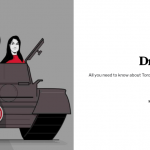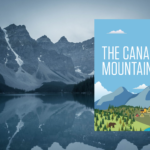What it was like covering stories in Canada’s North: Three Ryerson students reflect
Last summer, Marta Iwanek, Ashleigh Gaul and Samantha Anderson financed their own way to cover stories in the North for the Winter 2012 issue of the Ryerson Review of Journalism. Now, they’re reflecting on their time in Canada's north for J-Source.
Last summer, Marta Iwanek, Ashleigh Gaul and Samantha Anderson financed their own way to cover stories in the North for the Winter 2012 issue of the Ryerson Review of Journalism. Now, they’re reflecting on their time in Canada's north for J-Source.
The Winter 2012 issue of the Ryerson Review of Journalism featured an ambitious four-story package surrounding covering Canada's North. The three students who wrote these stories — Samantha Anderson, Ashleigh Gaul and Marta Iwanek — actually paid out-of-pocket to travel to the cities and regions their stories discussed to experience the coverage first-hand. (Their final tally of their expenses: $9,882 — as well as 50 nights sleeping on couches and four hitched rides.)
The three young journalists took some time to reflect on the experience for J-Source. Here is what they each had to say, as well as links to their respective stories in the Review.
***
Samantha Anderson — "Northern Tenacity" and "Northern Contradiction"
I slept on my grandmother’s cot in her basement in Mayo, Yukon and did research during the days I wasn’t in Whitehorse. There were parts of being from the Yukon that were advantageous: knowing where to look for sources, and being able to go and knock on their doors. The hard part was trying to see a community I was familiar with in a new light. I also had to go to Old Crow to find out about Edith Josie’s life for the retrospective of the long-time Whitehorse Star writer.
While in Whitehorse I made rounds downtown and read everything I could. I asked around and sure enough, people weren’t just familiar with Yukon News reporter Genesee Keevil — they had an opinion about her. The Yukon is full of wild and wonderful people but there is important journalism happening; journalists who are unafraid to dig into issues that would otherwise be left pleasantly ignored. Keevil is one of them. Whitehorse seemed to be a place that wasn’t quite sure what to do with itself and I admired the people who were willing to stand behind their opinions and be honest about poor politics or gag orders.
Further north in Old Crow, Edith Josie lived and wrote until her death. She unexpectedly took a reporting job (the minister’s wife decided she didn’t have time) and Josie ended up intriguing people all over the world. After meeting her in her one-bedroom cabin in 2008, I wanted to go back. Her family was open to speaking, and I went from cabin to cabin (they were all right beside each other) asking questions.
People of the Vuntut Gwich’in took me down river to their camps. People stood on the banks in front of their cabins and waved. Others in town cut up caribou meat for a potlatch as an elder had died. I was given caribou sandwiches and hot cups of tea. A little girl told me of how the bears were going crazy at night, trying to get inside homes while looking for food. She offered me a piece of bannock as I warmed my hands at the woodstove. Everyone had at least 6 or 7 dogs. The family I was with told me how strong their children were – unaffected by the harsh climate – and I knew their way of life was, and will continue to be, threatened.
The people of Old Crow told me that they remember outsiders. (I stood out almost instantly as a newcomer in the 300 person town.) The Vuntut exchange letters and cards with those who went to Old Crow, journalists or otherwise; it is no surprise they become friends.
Writing about northern journalism offers an understanding of the importance of covering both human interest and business stories there. They could be reworked into a representation of the broader picture – what is really going on in the North, why is it important now, and are Yukoners really that different from say, Torontonians?
***
Ashleigh Gaul — "Northern Restoration"
I became aware I had followers in Igloolik the first night I gave up trying to sleep and started wandering under the midnight sun, pretending I had somewhere to go, but really just trailing silent couples as they emerged from and disappeared into different houses. Early that morning, I returned to my cabin to find wood boxes piled up outside of the kitchen window, like stairs for someone to stand on and look in. Another night I heard footsteps on my roof and went outside to investigate. I heard my name, “Aaaaaaaaaashleigh!” called from some distant corner, and saw four ten-year old girls pedal furiously toward me on broken bicycles.
[node:ad]They asked me questions they already knew the answers to, such as, “You’re from Toronto?” and “You live in the wood house?” and, “Can we walk with you?” I said yes to all three but when we got to the edge of town, I followed them instead. They abandoned their bikes where they dropped them (they would lose their bikes and find them again several times over the next two weeks) and we navigated from lemming hideout to lemming hideout, further and further into the tundra. They showed me how to lure a quail away from her nest and steal her eggs, and how they could mimic a goose call so accurately the whole flock changed course in mid-air and flew toward them instead.
Every once in a while, one of the girls would say something devastatingly sad, unprompted and matter-of-factly: how one liked my pens and paper because her parents couldn’t afford to buy her school supplies; how another wandered all night in the summer so she wouldn’t have to squish in five to a bed with her parents and grandparents in an overcrowded house; how she had seen her uncle’s throat slit in that house by a cousin two years earlier.
I asked her where she would go if she wanted to leave Nunavut. She looked at me blankly, then dove to the ground to pull up a rock and corner a lemming. Laughing breathlessly — and with a fervour I’ve never seen or known growing up in southern Canadian suburbia — she said she loved her home and never wanted to leave Nunavut for good.
***
Marta Iwanek — "Northern Revival"
To get North on a tight budget wasn’t easy. The cheapest direct flight to Whitehorse on short notice was $2,100. Instead, I flew to Vancouver then took a 48-hour non-stop bus to Whitehorse, which cut the cost by half. And it wasn’t all that bad – I met a lot of very interesting people along the way: travelers from around the world, people visiting family or those just coming back home.
Before my trip, I did interviews over the phone. Though I tried to reconstruct as many scenes as possible, writing about this kind of reporting without actually being in the North wasn’t enough.
Whitehorse had a small town vibe that I wasn’t used to, where people would begin to recognize you within a few hours – “Oh hey, you were at the coffee shop earlier today right?” and an even smaller media circle – I must have recognized half of them within a day. But I definitely learned a lot from being there – even if it was only for a couple of days.
One of the first things I did was meet a few of the city’s reporters to talk about what they thought southern media were missing from their reporting of the territory. I also did streeters, which is something I never would’ve been able to do over the phone. Generally, everyone was friendly and open to talking, though I did get some scoffs at the subject.
I spoke with locals who had lived there all their lives and talked to the people who had come up to Whitehorse intending to stay for a few weeks but had ended up staying for years and counting. It was a great place, a different place, but a real place – not just a place that people described to me, but one that I actually saw.
I shadowed Paul Watson as he did his work as the Toronto Star’s Arctic-Aboriginal correspondent (now global affairs columnist), a beat he had been working on since 2009. It was interesting seeing how another journalist works – there was never a moment wasted. With Watson, we spent a lot of time travelling in the areas outside of Whitehorse. To get a small ending to his piece on the Peel Watershed, he spent 8 hours round-trip on a trip to Faro — a town over 300 kilometres away from Whitehorse. It’s funny how deep conversations can get when it’s just two people in a car for hours staring at the open road ahead. (I think I will try to trap all my future interview subjects on car trips to try to get to the bottom of what they really think.)
Being in a city like Whitehorse, I feel like I may not have experienced a North many Canadians usually think of, but it was interesting nonetheless. Locals like to boast about how great it is, but also how it’s a best-kept secret. It really opened my eyes to how diverse the North is and how naïve it is to believe that you can report on it from a big city in the South.
CORRECTION: This article mistakenly referred to the current issue of the Ryerson Review of Journalism as the "Winter 2011" issue. These stories are, in fact, from the Winter 2012 issue and we have updated the story to reflect this. We apologise for this mistake and any confusion it may have caused.




